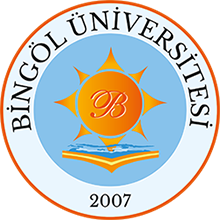TOZ METALURJİSİ YÖNTEMİ İLE ÜRETİLMİŞ SiC TAKVİYELİ BAKIR MATRİSLİ KOMPOZİTLER İLE BAKIRIN KAYNAK EDİLEBİLİRLİĞİNİN ARAŞTIRILMASI
Özet
ÖZET
Kompozit malzemeler, iki veya daha fazla bileşenden üretilen malzemelerdir. Bu malzemeler, birçok yönden farklılık gösteren bileşenlerinden ayrı olarak yeni ve ayrımlı bir malzeme elde etme amacıyla üretilirler. Bunların üretiminde birçok yöntem mevcuttur. Bu yöntemlerden en yaygın olanların başında toz metalurjisi tekniği gelir.
Maliyet açısından önemli bir avantajı olan döküm yönteminin en büyük handikapı takviye elemanlarının homojen bir dağılım göstermemesidir. Öte yandan takviye malzemesinin matris içinde homojen dağılımını önemli ölçüde mümkün kılan yöntemlerin başında ‘toz metalurjisi’ yöntemi gelir.
Ergitme kaynak yöntemleri ile kompozit malzemeler ve diğer metallerin birleştirilmesi zordur. Bu nedenle kaynak sonrası iç gerilmelerin daha az olması, ergitme olayının olmaması ve daha az kaynak hataları gibi avantajlar sayesinde sürtünme kaynağı yöntemi kullanılmaktadır.
Bu çalışmada, Cu matrisli SiC takviyeli kompozit malzeme toz metalurjisi metodu ile elde edilmiştir. Elde edilen bu ürün sürtünme kaynağı metoduyla saf bakır (Cu) çubuklarla birleştirilmiştir. Kaynak esnasında %5, %10, %15 oranlarında SiC takviyeli bakır matrisler, devir sayısı ve sıcaklık gibi parametrelerle, ayrı mikroyapı ve mekanik değerler içeren birleşme bölgeleri tespit edilmiştir. Bu tespitler ışığında, SiC takviyeli bakır matrisin bağlantı bölgesinin mukavemeti üzerine olan etkisi de incelenmiştir.
Çalışmamızda ilk olarak konunun giriş ve amaçlarından bahsedilmiştir. Daha sonra katı hal kaynak yöntemlerinden bahsedilmiş olup, sonraki bölümde deneysel çalışmamızın yöntemi, hazırlık çalışmaları ele alınmıştır. Son olarak ampirik bulgular incelenip, deney sonuçları analiz edilmiş ve elde edilen sonuçlar ile önerilere yer verilmiştir. ABSTRACT
Composite materials are materials made from two or more components. These materials are produced with the aim of obtaining a new and distinctive material, apart from its components, which differ in many aspects. There are many methods for their production. The most common of these methods is the powder metallurgy technique.
The biggest handicap of the casting method, which has an important advantage in terms of cost, is that the reinforcement elements do not show a homogeneous distribution. On the other hand, the 'powder metallurgy' method is the leading method that enables the homogeneous distribution of the reinforcement material in the matrix to a great extent.
It is difficult to join composite materials and other metals with fusion welding methods. For this reason, weld welding method is used due to the advantages such as less internal stresses after welding, no melting and less welding errors.
In this study, Cu matrix with SiC reinforced composite material was obtained by powder metallurgy method. This product was combined with pure copper (Cu) rods by friction welding method. During welding, 5%, 10%, 15% SiC reinforced copper matrices, with parameters such as speed and temperature, joint areas with separate microstructure and mechanical values were determined. In the light of these determinations, the effect of SiC reinforced copper matrix on the strength of the connection zone was also investigated.
In our study, firstly, the introduction and aims of the subject were mentioned. Then, solid state welding methods are mentioned, and in the next section, the method of our experimental study and preparatory studies are discussed. Finally, the empirical findings were examined, the experimental results were analyzed, and the results and suggestions were given.
Koleksiyonlar
- Makine Mühendisliği [24]

DSpace@BİNGÖL by Bingöl University Institutional Repository is licensed under a Creative Commons Attribution-NonCommercial-NoDerivs 4.0 Unported License..













